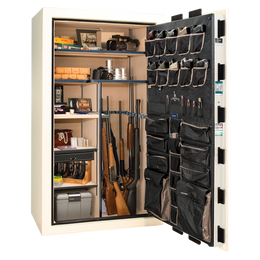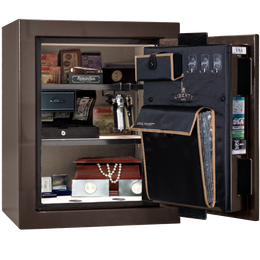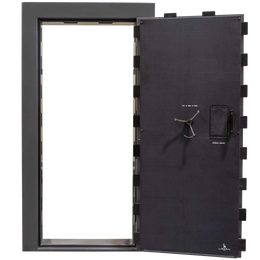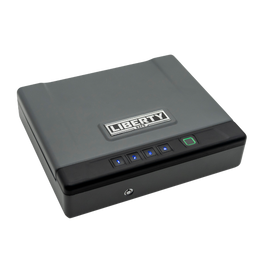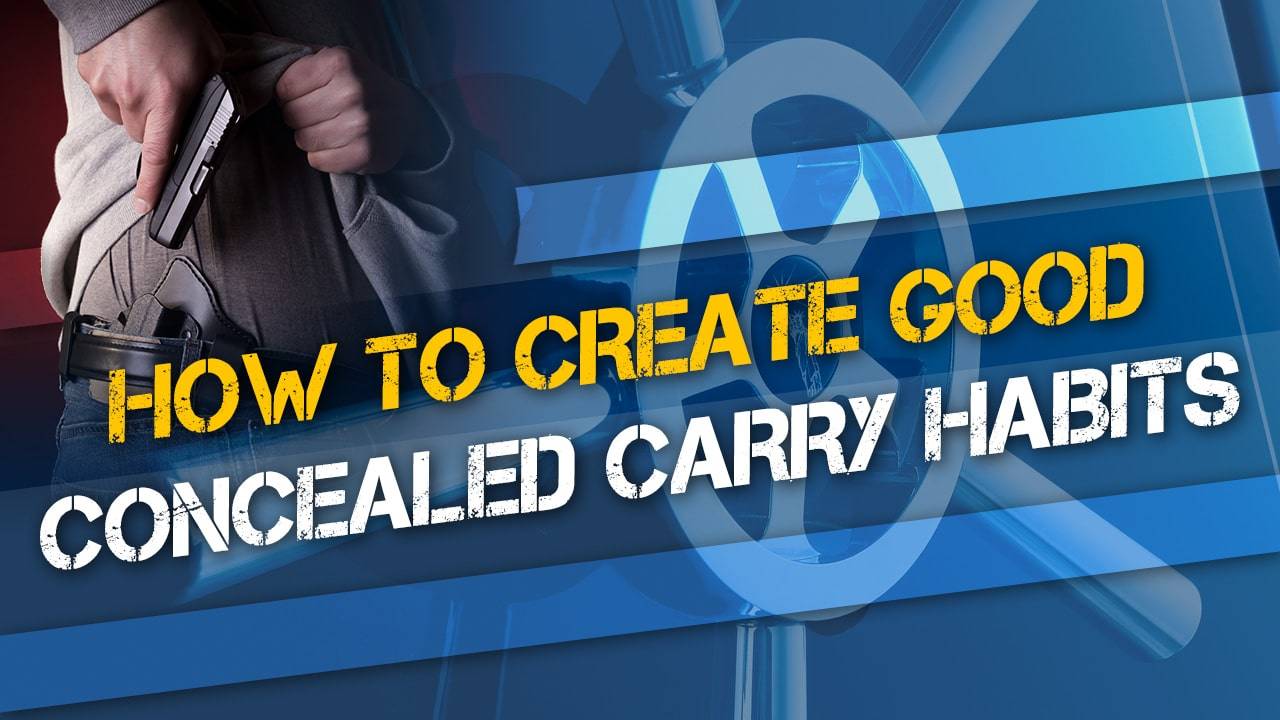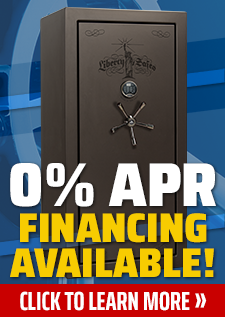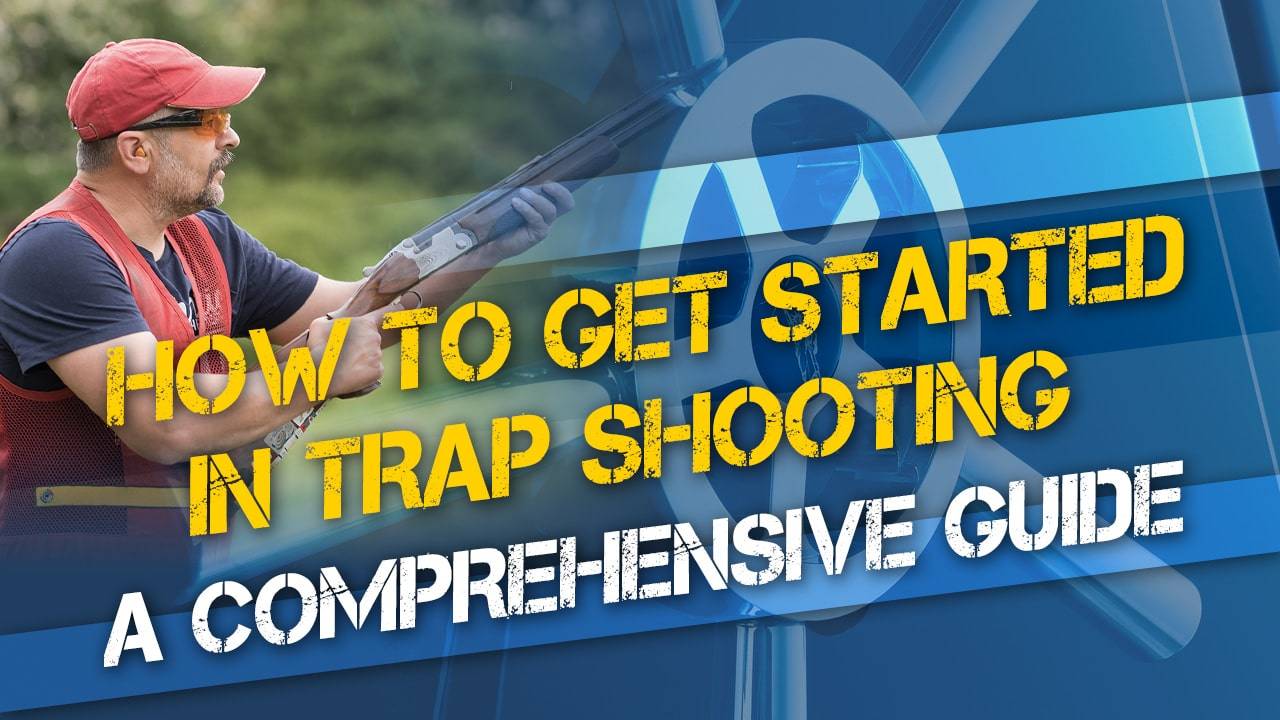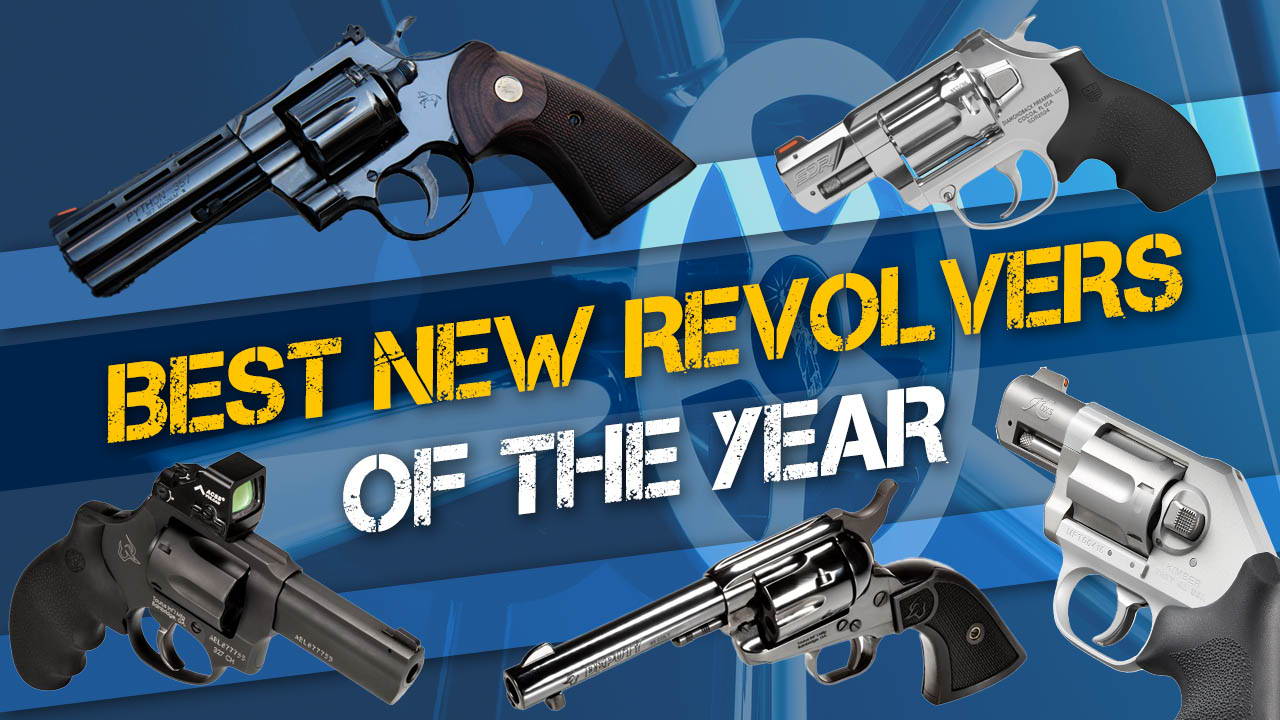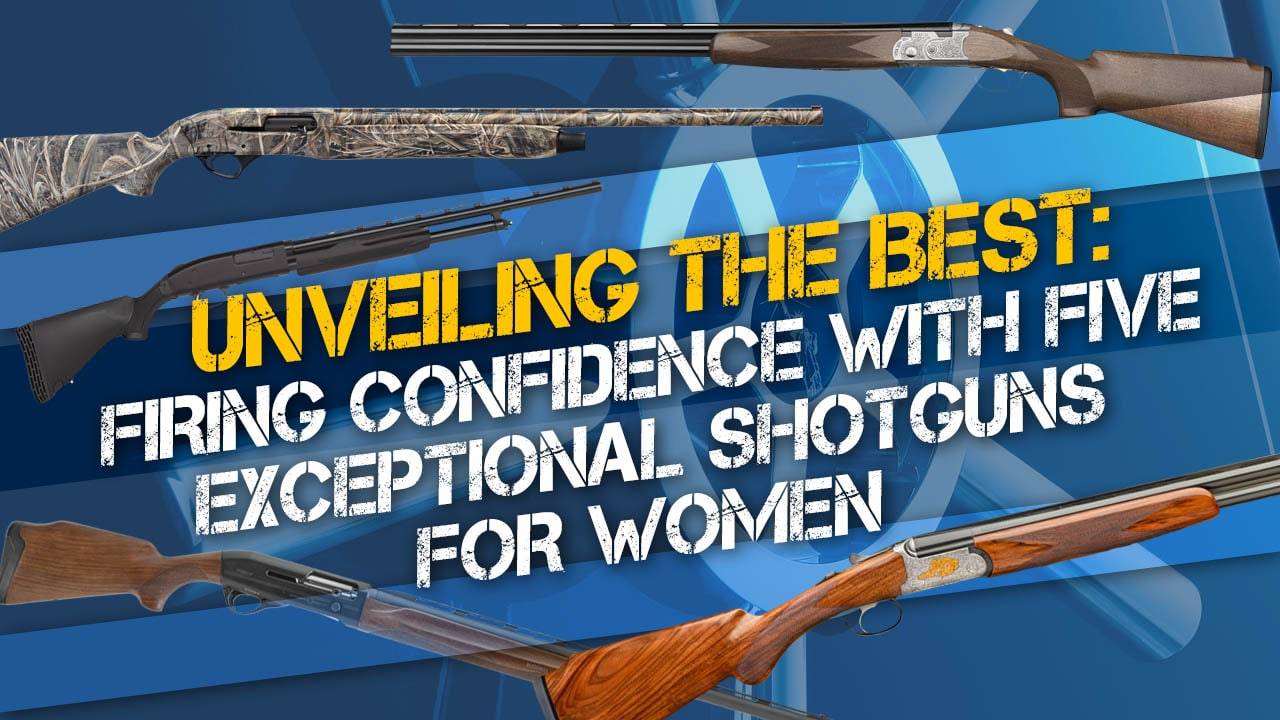Carrying a concealed weapon (CCW) is becoming more common as social unrest increases and more people wish to take control of their own defense. More states are adopting permitless carry, which means legal, non-felon citizens may carry a concealed firearm without a state-issued permit. In our view, this is a good thing because every law-abiding American should have the right to carry a firearm if desired.
However, simply buying a new handgun and stuffing it in your pocket is not ideal and, in many cases, can be unsafe. There are quite a few things you should consider before you get serious about CCW. We’re going to go over some key points and helpful tips to make developing good concealed carry habits easier.
Please note: This article is for informational purposes only. Neither Liberty Safe nor the author assumes any liability for the use or misuse of this information. It is your responsibility to understand and conform with all local laws and ordinances relating to the carry, use, and storage of firearms.
The importance of responsible concealed carry habits
You wouldn’t hand someone the keys to a 4,000-pound car if they hadn’t learned to drive. You wouldn’t let someone borrow your chainsaw if they had no knowledge of how to use it safely. Similarly, you shouldn’t carry a concealed firearm without learning and practicing responsible CCW habits.
Concealed carry safety concerns
Any time you’re dealing with firearms, it’s important to know and practice the four rules of firearm safety. There are disagreements about the proper wording of the four rules of gun safety, but these are the essential points:
- Treat all guns as if they’re loaded unless you personally, immediately, and visually verify otherwise. Another way to put this is that all guns are always loaded.
- Never allow the muzzle/barrel of any gun to point at anything you are not willing to shoot and destroy. This includes the shooter’s legs, feet, hands, pets, other people, etc.
- Keep your finger off the trigger and outside the trigger guard until your sights are on the target and you are ready to shoot.
- Be sure of your target and what is behind it. For example, don’t shoot at a target on the crest of a hill, as you have no idea where that bullet will go. In the CCW mindset, be very aware of innocent bystanders behind or to the side of any threat. You are responsible for every bullet that exits the muzzle of your gun.
These rules should be followed whenever you’re handling any firearm, but they are especially important when carrying a concealed, loaded gun on your person. Daily, repetitive behaviors can breed complacency, so staying vigilant in your CCW routines is important.
Depending on which type of concealed carry method you select, you may technically have a loaded firearm pointed at your own body at times (even though it’s in a quality holster). This makes some people uncomfortable. It’s very important to select a high-quality CCW holster that protects the trigger (see below for more on this subject) and only administratively handle your CCW firearm when necessary and in a safe location with a solid backstop.
Don’t fidget with your gun. Never unholster your CCW firearm to show a buddy, use the restroom, or anywhere in public. Your concealed carry firearm should remain concealed in its holster until either you need it to protect your life or you are at home or another secure location and are removing it for storage, cleaning, maintenance, or practice.
Legal compliance of CCW
The first thing you must consider when preparing to carry a concealed firearm is whether it is legal to do so in your jurisdiction. Although technically, every state allows some type of concealed carry, it is nearly impossible for a regular citizen to obtain the necessary permits in many states. You might need an interview with the local sheriff or the recommendation of an important local government official, either of whom may be completely anti-gun and refuse to give you permission. Some states and counties require you to prove to a judge that you must carry a concealed firearm before they even consider issuing you a CCW permit.
Also, be aware that different states, counties, and even municipalities can have very different firearms laws, including CCW restrictions. It is your responsibility to understand and comply with all local laws. Don’t assume that since you have a CCW permit in your home state, you’re legal to carry in another state. Similarly, don’t assume that a CCW permit in your home state allows you to carry in all locations within your home state. Every state can set its own CCW laws, and many times, a county or city will enact laws that are more restrictive than state laws.
Some states allow you to CCW in schools; some don’t. Some states allow you to CCW in establishments where alcohol is served; some don’t. Some states allow you to CCW legally inside local businesses, even when those businesses have posted signs restricting concealed carry; some don’t. You need to learn and understand your local regulations.
Some states have added clauses to their state constitutions preventing local jurisdictions from enacting laws that are contrary to state law, but in many places, it can still happen. So remember to stay up-to-date on your local laws and the laws of any location you wish to travel while carrying a concealed firearm.
Public perception of concealed carry
Public perception of concealed carry can vary drastically from state to state, city to city, and even among people in the same community. Someone who hates guns and blames them for the crimes committed by criminals using firearms is generally very hostile to anyone known to be carrying a concealed weapon. This is something you need to consider before carrying a concealed firearm.
Additionally, many employers have rules prohibiting CCW possession on company property or while employed. Even if local jurisdictions allow concealed carry at work, an employer has the right (in many cases) to discipline or fire an employee who doesn’t comply with company rules. Large, national, or international corporations often have very different policies from the local population in which their facilities reside and people work. So, you may need to conform to restrictive, anti-gun policies while at work or risk being terminated.
However, the key word in the term concealed carry is concealed. Ideally, no one should be able to tell if you’re carrying a concealed firearm. You will have to make the decision whether to carry a gun legally, but contrary to the rules of your employer or the wishes of your friends or family. But if you decide to do so, nobody needs to know about it, unless in the rare instance of you actually using your CCW firearm for self-defense. In that case, most people would argue that the social or employment backlash would be worth saving your life or someone else’s.
If you live in a typically gun-friendly location, you should still be careful not to flash or print your CCW firearm through unsuitable clothing or unorthodox movements in public. Be vigilant not to expose your carry rig when using a public restroom or when reaching for an item on a high supermarket shelf. Generally speaking, people are more comfortable when they don’t know you are armed. Read our article on open carry versus concealed carry for a deeper dive into this topic.
Everyday concealed carry habits
When you start carrying a concealed firearm on a daily basis, you’ll learn a lot about yourself. You’ll probably reach a point where carrying a gun is so annoying and uncomfortable that you might decide to take a day or two off. You may eventually decide that it’s not worth the hassle. However, if you stay committed, develop good daily habits, and optimize your wardrobe and CCW rig for maximum comfort and concealability, you will likely find success.
Develop a daily carry ritual and never break it
People who study human behavior and goal-setting understand the power of developing habits. A simple habit that most people can relate to is to always keep your car keys in the same place, either in your left pocket (for example) or hanging on a dedicated hook in your home. If you don’t ever make exceptions to these rules, you won’t ever lose your car keys.
Video: 5 TIPS TO CARRY A GUN EVERY DAY
Similarly, you need to develop a ritual or habit for putting on and taking off your CCW rig daily. We recommend you commit to keeping your CCW firearm only in one of two places: In your holster while you’re wearing it or in your handgun vault/gun safe when you’re not. Nowhere else, ever.
Even if you’re completely worn out after a long day. Even if something interrupts the process of putting on your rig. Even if the phone rings. Never break this habit.
You’ll need to decide whether you want to unload your handgun every time you take it off or keep it in its holster, loaded and locked away. This is an individual choice. However, be aware that local ordinances may prohibit storing a loaded firearm, even in a vault or safe. So check your local laws. We also don’t recommend leaving a loaded firearm unsupervised, even if you don’t have anyone else living in your place of residence. Firearms should be either under your direct control, or secured from theft and/or unauthorized use. Again, local ordinances may require firearms to be locked up, even if unloaded.
If you decide to unload your gun when you’re not wearing it, and load it every day before you carry it, you need to be absolutely stringent about the four rules. During administrative handling (safety checking, loading, and unloading) is when 99.99% of unintended discharges occur. You should unload and load in a safe location with a hardened backstop, such as concrete or brick. You may also want to invest in a handgun clearing trap that you can keep in the place where you unload and load your firearm. These devices contain an unintended shot and prevent the bullet from traveling through floors and walls.
Never chamber the same cartridge in a semi-automatic more than twice
Unless your CCW pistol has a tip-up barrel that allows manual insertion of the first cartridge into the chamber, you should avoid chambering the top cartridge from your magazine more than twice. This is because, as the slide or bolt strips a round from the magazine, the nose of the cartridge slams into the loading ramp of the barrel as it’s fed into the chamber. That force can set the bullet back into the case a fraction of an inch, increasing pressure and, if the bullet is set back into the case deeply enough, creating a dangerous situation that can actually blow up your gun.
Generally, chambering a cartridge once or twice doesn’t set the bullet back far enough to make a noticeable increase in chamber pressures. However, with repeated chamberings of the same cartridge in semi-automatic firearms, bullet setback is a legitimate concern.
If your daily CCW ritual includes unloading the chamber of your semi-auto pistol when you take off your rig and then loading your pistol again the next time you put it on, you need to be aware of this potential danger. Pay attention to how many times you have chambered the top cartridge in your magazine, and rotate it to the bottom after you have chambered it twice. Then, do the same for the next round in your magazine. When each round in your magazine has been chambered twice, either use that ammunition for range practice or retire it and load your magazines with fresh ammunition.
Keep your CCW firearm clean and lightly lubricated
You may be surprised to learn that wearing a firearm or keeping it in a pocket or purse can get it very dirty, even if you never use it. Water vapor from perspiration can rust surfaces and springs. Acids from the skin can cause corrosion. Lint, debris, and (ew) flakes of skin can collect in the mechanisms of your firearm and clog it up, potentially rendering it inoperable. Oil and lube can oxidize and harden over time, getting gummy or sticky. There are many accounts of police officers and CCW civilians taking their carry firearms to the range (or drawing them during an altercation) and discovering they don’t work due to neglect.
We recommend you carefully examine, clean, and lightly lubricate your CCW firearm at least every month. Every other week would be better. If you live in a very humid location or have gotten sweaty or rained on, you need to check your CCW firearm immediately and take care of the moisture. Stainless and polymer firearms can be more resistant to this type of moisture damage, but they still need regular preventative maintenance.
Don’t slather your carry gun with oil. Too much oil attracts lint and grit, which can build up on your gun and cause malfunctions. Excess oil can also stain and ruin clothing and holsters. Follow your manufacturer’s recommendations for cleaning and lubricating your firearm, and try to keep excess lubrication wiped off external surfaces.
Rotate your ammunition
There are reliable accounts of police officers carrying the same 6 rounds of revolver ammunition for YEARS, and when they needed to draw their sidearm to defend their lives, those rounds didn’t go off. Why? There are several possible reasons. Corrosion over time can attack the metals in the cartridge. Moisture can migrate past the primer or case mouth and ruin the gunpowder. Vibration can break up the priming compound and/or degrade the powder granules. Old gunpowder may simply deteriorate or off-gas and become defective.
Always keep your carry ammo fresh, and purchase the best-quality ammo you can afford (and that functions reliably in your gun). If you’re regularly practicing with your CCW firearm at the range (and you should), fire the ammunition you have been carrying and reload with fresh ammo when you’re done with your session. It’s up to you how often this is done, but we’d recommend at least every couple of months. After all, you’re relying on your CCW firearm and ammunition to save your life potentially. Don’t cheap out.
Don’t forget you’re armed
This happens more often than you might think. People who carry concealed firearms on a daily basis make the practice part of their routine. They get so used to it that, at times, they may even forget they are carrying a gun at all. People have tried to enter airport security checkpoints, federal buildings, courtrooms, carry-restricted schools, and other secure locations, forgetting they are carrying their CCW firearms. In decades past, this may have resulted in a mildly embarrassing correction by authorities at the point of entry. Today, however, you can potentially be hit with an expensive fine or even criminal charges.
We commend you if you’ve successfully made concealed carry a part of your daily routine. However, it’s important always to be aware and secure your firearm at home or in your vehicle before entering a carry-prohibited area.
Developing a concealed carry mindset
When you choose to carry a concealed firearm, you need to develop the habit of carrying your gun every single day, even when you don’t feel like it. Choosing the right holster, method of carry, and firearm (see the sections below) can help a lot with this, but mentally committing to always being armed is the first and most important step.
Obviously, you need to learn and develop safe CCW practices. But just as important is the right mindset. Carrying a gun isn’t the same as carrying other items, such as a flashlight or car keys. A firearm is inherently dangerous when used irresponsibly, similar to a power saw or an automobile. Guns can cause lethal harm to others or yourself if misused. It is not something to be taken lightly.
So, if you choose to carry a concealed firearm, you need to stay very alert and aware of the fact that you’re armed. Avoid questionable situations and behaviors. Make sure you set reminders or practice putting on and taking off your gun every day so you won’t mistakenly leave your CCW pistol around where a child or other unauthorized person can get it. Commit regular time to practice at the range with your CCW firearm. If these are not things you can reasonably do, you should reconsider carrying a concealed firearm.
Video: 12 Concealed Carry Tips You Need To Know
Also, if all you do to develop a personal defense strategy is get your CCW permit (if one is necessary where you live) and start carrying a gun, that’s a good start, assuming you can get into the proper mindset. However, you should also understand that a gun isn’t a magic item that somehow repels bad guys and dangerous situations. It’s a tool to be used in life-or-death situations. It doesn’t magically stop bad people from doing bad things. Even if you are forced to use your CCW firearm to defend yourself or someone else, it doesn’t mean your gun is guaranteed to stop an attack or prevent harm to you or others.
Studies of actual shootings prove that when people get shot, they don’t often drop dead instantly or stop their actions. Differences in physical build, psychology, pain tolerance, drug use, internal ballistics, and your ability to place accurate shots on target mean an attacker may not be immediately stopped if shot. If you are forced to shoot an attacker, you must continue defending yourself until the threat is no longer present. Make sure you are mentally and physically ready to do so. It’s a good idea to get basic or advanced close-quarters self-defense training, independent of concealed-carry courses, so you are more prepared to deal with threats in case you forget your firearm, it becomes inoperable during a fight, or is lost in the struggle.
Concealed carry training
Constitutional carry has become legal in many states, meaning you may carry a concealed firearm without any special state-issued permit. If you have regularly handled and shot firearms for years and take safety seriously, you may be fine carrying concealed without any additional training. However, we feel it’s a good idea for everyone to get CCW specific training from a reputable source. In-person training from an experienced trainer who is familiar with your local laws can go a long way toward helping you develop good concealed carry habits.
Video: Best Drills for Conceal Carry
You might be surprised how much you don’t know once you take a course. Like shooting, situational awareness and keeping the proper CCW mindset is a perishable skill. If you get lazy or complacent, you may find that you don’t have the proper mental toughness or skills necessary in the rare event you actually need to use your CCW firearm. We recommend getting quality training on a regular basis, or at the very least, practicing regularly with your selected concealed-carry firearm and concealment holster rig.
Your local gun range, Facebook group, or firearms forum can likely recommend a reputable firearms trainer in your area.
Selecting the Right CCW Firearm
This topic is extremely popular in the firearms community, and everyone wants to know what’s the best concealed-carry handgun. Well, there’s no real BEST when it comes to CCW firearms. Many criteria are subjective and depend upon your preferences, skills, budget, CCW method, and even body type. However, there are some basic principles that can help you select the best CCW firearm for you.
Reliability
This is paramount and trumps all other considerations. Your choice of CCW firearm absolutely must be acceptably reliable with your selected carry ammo. Otherwise, what’s the point of lugging around the bulky, heavy thing? You must be able to rely on your CCW firearm to function when you need it. Most major firearms manufacturers make at least a few acceptably reliable CCW models. However, every company produces the occasional lemon, so you must practice with your specific CCW firearm at the range and demonstrate that it is reliable enough to bet your life on. If it’s not, trade it in or use it for malfunction clearance practice and find a reliable gun to carry.
Video: Top 5 Concealed Carry Pistols Of 2023
Ergonomics and manual of arms
In our view, this is the second most important factor to consider, next to reliability. You want your CCW handgun to fit your hand like a glove. You want to be able to reach and manipulate all the controls easily. You want it to point naturally and the sights to line up with the target effortlessly. You need to be able to load, unload, and operate the gun safely, including any manual safeties (if present). This is referred to as the manual of arms. Depending on your hand strength, hand size, dexterity, and personal preferences, a gun that’s perfect for someone else may be entirely wrong for you. Select a CCW handgun that feels good in your hand and that you can operate (and shoot) effectively.
This may take some time to understand. You may find that after a year of carrying and using a particular gun, you really dislike some aspects of it. This is perfectly normal. You have then learned some important things about your individual CCW preferences, so start your search for a better choice.
Size and weight
When you commit to carrying a gun all day, every day, firearm size and weight become key factors in success. If a gun is too heavy for you to carry comfortably, you won’t carry it. Similarly, if a gun is too wide, bulky, or long for you to manage comfortably, you won’t carry it, and it becomes worthless as a CCW option. For this reason, the obvious choice for CCW is firearms that are smaller, slimmer, and lighter than a full-size duty weapon. However, plenty of people carry full-sized handguns concealed, such as 1911s, medium or large-frame S&W revolvers, or Glock 17s. It can be done with the right mindset, wardrobe, belt, and holster.
Today, micro-compact 9mm pistols are by far the most popular choice for CCW, as they strike an excellent balance between size, weight, capacity, and shootability. However, just because they’re the most popular doesn’t mean they’re right for you.
Be aware that one of the most often recommended CCW handguns might be the worst choice for you. Read our full article on why a small revolver might be the worst CCW gun.
Action type
Some people favor a particular type of firearm action for their CCW handgun. Whether out of personal preference, bias, hearsay, or research, some people prefer to carry a revolver, while others choose a semi-automatic pistol. Both are justifiable choices, and both have their pros and cons. Be sure to choose the action type you are comfortable with and can gain familiarity with. You want to know your CCW handgun inside and out.
Budget
This seems like it shouldn’t be a factor when we’re talking about a potentially life-and-death decision, but it is. Many people can’t afford an $800 or $1,000+ dollar CCW handgun or a $400 holster. That is nothing to be ashamed of. There are a lot of quality CCW options that won’t break the bank. You should definitely get the best firearm and CCW holster rig you can afford, but that doesn’t have to equate to three months’ salary. Read up, shop around, and read reviews of lots of handguns within your selected price range. Chances are there’s one that meets your CCW needs as well as your budget.
Legality
As noted above, you are responsible for learning, understanding, and complying with all your local laws and ordinances regarding CCW. Some jurisdictions may specify what types of firearms may legally be carried, or place limits on ammo capacity, or even define what types of projectiles may be loaded. Just because a certain pistol is the most popular choice for CCW, that doesn’t mean it’s legal where you live. Be sure to confirm before you buy.
Try before you buy
If possible, try out multiple models, types, and sizes of CCW handguns before you buy one. Many shooting ranges offer rental services, where you can pay a fee and try out as many of their range guns as you like. This is an excellent way to get hands-on experience with different types of guns. If you don’t have access to a local range that offers rentals, get involved with a local forum or ask any friends you know who have guns and see if they would like to go to the range with you and let you try some out. Offer to pay for the ammo, and we’re betting you’ll get a positive response.
CCW holsters and carry methods
We’ve covered this topic more extensively in our articles on Concealed Carry 101 as well as Best Concealed Carry Holsters, so be sure to check those posts out for full details. However, we’ll go over the five primary methods of concealed carry very briefly so we can address the issue appropriately:
- Outside the waistband or OWB: In this CCW method, you carry your holstered firearm on your belt outside the waistband of your outer garment (pants, skirt, kilt, clown suit, whatever). This requires the use of a cover garment such as a vest, untucked shirt, or jacket to conceal your CCW firearm and holster fully.
- Inside the waistband or IWB: In this CCW method, your holstered firearm rides on your waistband but inside your outer garment rather than on the outside. This allows your shirt or blouse to cover the exposed grip of the firearm for enhanced concealment. Some IWB holsters have tuckable belt loops that allow you to tuck a garment between the firearm/holster and your pants/skirt. Buying your pants or skirt a size or two larger than you typically wear can make this type of carry much more pleasant.
- Appendix inside the waistband or AIWB: This type of IWB holster is designed specifically to be carried directly below your navel or just to one side (depending on your dominant hand). This is becoming very popular because it allows very effective concealment with just a t-shirt over the top, a very rapid draw, and access to the firearm with either hand. However, a quality holster, lots of safety training, and a very safe firearm action/trigger are a must because you’re essentially pointing the muzzle of your holstered firearm at your femoral artery and/or your family jewels, neither of which respond well to a negligent discharge.
- Pocket carry: Pocket carry is exactly what it sounds like: carrying a firearm in your pocket. This can be either in a pants pocket or jacket/vest pocket. We strongly recommend that you use a dedicated pocket holster rather than just dropping your gun into a pocket. A pocket holster keeps the butt/grip of the gun oriented upward so you can acquire a firing grip quickly. It also helps keep lint and grit out of the action of your gun. Most importantly, a proper holster covers the trigger guard of your CCW firearm and prevents the trigger from being contacted by anything as you move around or bump into something.
- Off-body and unconventional carry: We categorize unorthodox CCW holsters such as ankle holsters, fanny pack holsters, PDA/cell phone holsters, bra holsters, and belly bands as unconventional carry. Off-body carry refers to carrying a firearm in something unrelated to your body, like a backpack, briefcase, handbag, or purse. All these carry types have their downsides and are usually not recommended for a primary CCW gun. However, in some cases, they can be appropriate. The advantage of the deep-concealment type of holster, like a bra holster, belly band, or ankle holster, is that there is a very low probability of your firearm being noticed by the public. Concealed, in this case, means very concealed. Off-body is very convenient but includes a greatly increased risk of loss, theft, or misplacement of your firearm.
CCW holsters and materials are another area requiring individual investigation to learn your preference. For AIWB carry, most people prefer Kydex holsters (a thin, durable polymer material) rather than leather or nylon, but you might feel differently. Traditionally, a sturdy leather OWB or IWB rig was the gold standard for decades, but today, there are many choices. Hybrid-type holsters often utilize a leather backing piece that goes next to the body and a Kydex outer piece to act as an effective holster. Read our article on CCW holsters for some of our favorites, but understand that you will need to try a holster out and wear it for at least a few days to understand whether it’s right for you.
Choosing a CCW method and holster setup that works for you and your situation is a personal choice only you can make. Investigate the pros and cons of each and maybe try out more than one method. You may find you prefer a CCW holster or carry method you hadn’t previously considered.
Remember, the point is to find a system and develop solid habits that allow you to carry every day.
Safe storage of your CCW firearm
As noted earlier, we recommend you securely lock up your CCW firearm (and all other firearms) when not under your direct control. Your local ordinances may require it. A quality handgun vault or US-made gun safe from Liberty is an excellent way to secure your firearm from theft, unauthorized access, and environmental damage. Check out our interactive online catalog, or visit a Liberty Safe showroom near you.


